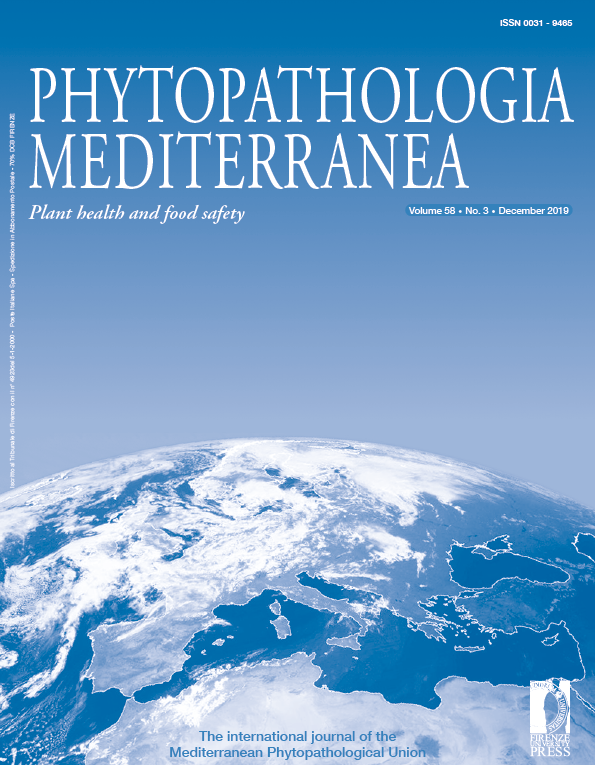Identification and pathogenicity of lignicolous fungi associated with grapevine trunk diseases in southern Italy
Published 2019-12-30
Keywords
- Cadophora luteo-olivacea,
- Colletotrichum fioriniae,
- Seimatosporium vitis-vinifera,
- Truncatella angustata,
- phylogenies
- artificial inoculation ...More
How to Cite
Abstract
Over the last 10 years, several fungi were isolated from grapevines with grapevine trunk disease (GTD) symptoms, in the Apulia and Molise regions of Italy. Morphological and molecular analyses allowed the identification of species belonging to Botryosphaeriaceae, Phaeoacremonium species, Phaeomoniella chlamydospora, Pleurostoma richardsiae and less-common fungi associated with grapevine trunk diseases, such as Cadophora, Colletotrichum, Seimatosporium and Truncatella. These last genera were isolated at significant frequencies, so they were investigated for possible involvement in GTDs. To screen the large numbers of isolates collected, microsatellite-PCR analysis was carried out with the M13 primer, and 29 strains were further studied by amplification of different genes, for multi-locus analyses. Phylogenies and morphological analyses allowed identification, for first time in Italy, of fungi associated with GTDs, including Cadophora luteo-olivacaea, Colletotrichum fioriniae, Seimatosporium vitis-vinifera and Truncatella angustata. Pathogenicity assays with these fungi and other fungi known to be pathogens for grapevines (Lasiodiplodia citricola, Phaeoacremonium italicum, Pleurostoma richardsiae) showed that they caused disease symptoms on two Italian grapevine cultivars (‘Bombino bianco’, ‘Nero di Troia’), although with different degrees of severity. Among the fungi isolated for the first time in Italy, Sei. vitis-vinifera was the most aggressive, while C. fioriniae the least pathogenic. All of these fungi were re-isolated from grapevine, and thus fulfilled Koch’s postulates, confirming their pathogenicity on grapevine.






